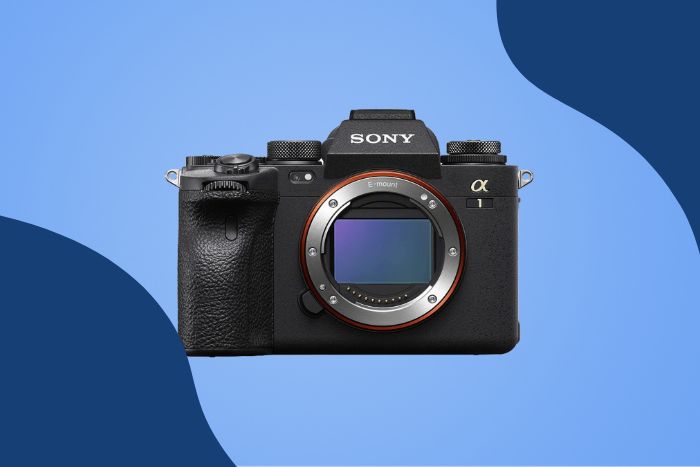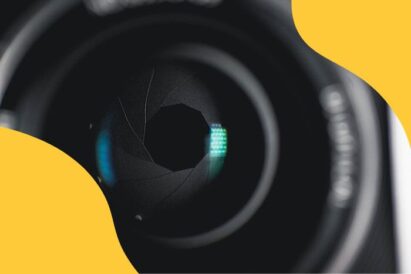What’s the best affordable camera for landscape photography? Well, you probably want one with an APS-C or full frame sensor for low-light performance. And you also want decent resolution for large prints and weather sealing for “go-anywhere” travel.
Unfortunately, you get what you pay for. Landscape photography cameras with larger sensors and more features are generally more expensive. But we’ve limited the budget for these camera bodies to about $1,200 and under. Our top choice is the Panasonic Lumix DC-G9. It hits the mark with high resolution, weather sealing, and customization.

Panasonic Lumix DC-G9
The Best Affordable Camera for Landscape Photography
There are two types of cameras on our list—mirrorless and DSLRs. Each has pros and cons.
Mirrorless Cameras for Landscape Photography
Most mirrorless cameras and lenses are smaller and lighter than their DSLR equivalents. And their autofocus (AF) systems usually cover the entire frame. So you don’t have to focus and recompose.
They have electronic viewfinders (EVFs) and LCD screens showing a real-time view of the exposure and white balance. So “what you see is what you get” (WYSIWYG). EVFs are also usable in bright sunshine—unlike the LCD screen of a DSLR.
But the recent development of the format means fewer wide-angle lenses are available. And it doesn’t help that Canon and Nikon refuse to let third-party manufacturers make competing lenses.
DLSR Cameras for Landscape Photography
DSLR cameras offer similar sensor sizes and resolutions. The weather sealing is also usually better than with mirrorless cameras. You also get a fantastic range of lenses—whichever brand you choose.
But manufacturers are investing less and less in DSLRs as mirrorless cameras overtake them. And more and more models are being discontinued, such as the Nikon D3500 and D5600.
Nikon now only has one DX-format DSLR, and even Canon might stop releasing new DSLR cameras at some point. That’ll leave Pentax as the last one standing!
Let’s have a quick look at a summary of the best options. And jump to our buying guide and camera FAQs at the end of this article If you need more help choosing a camera.

- High Resolution mode for detailed images of static subjects
- Lots of custom button options and touchscreen functionality
- An LCD screen on the top plate
- Easy Wi-Fi and Bluetooth connectivity
- Durable, weather-sealed body
- Excellent 4K / 60p Ultra HD video

- Great value for the price
- Eye-detect autofocus for humans and animals
- Compact size
- 4K video option
- Flip-out touchscreen for selfies and vlogging

- Image stabilization
- Optional anti-aliasing (AA) simulator
- Selfie-friendly LCD screen
- ASTROTRACER function for tracking stars
- Dustproof and freezeproof

- Excellent image quality
- Face and eye-detection AF
- Great ISO range and low-light performance
- 4K/25p and Full HD/120p video
- Webcam functionality and remote shooting with smartphone

- Stunning image quality
- Good ergonomics
- 5-axis in-body stabilization
- 30 fps with crop or 20 fps without
- 4K Ultra HD with good dynamic range
- Wi-Fi and Bluetooth connectivity

- A more affordable mirrorless option
- Nice to handle and use
- Relatively lightweight and not too bulky
- Solid 4K video performance

- Powerful APS-C sensor
- Professional-standard Dual-Pixel AF
- 23 fps burst speed (electronic shutter)
- Compact and lightweight camera body
- Excellent video quality with 4K options
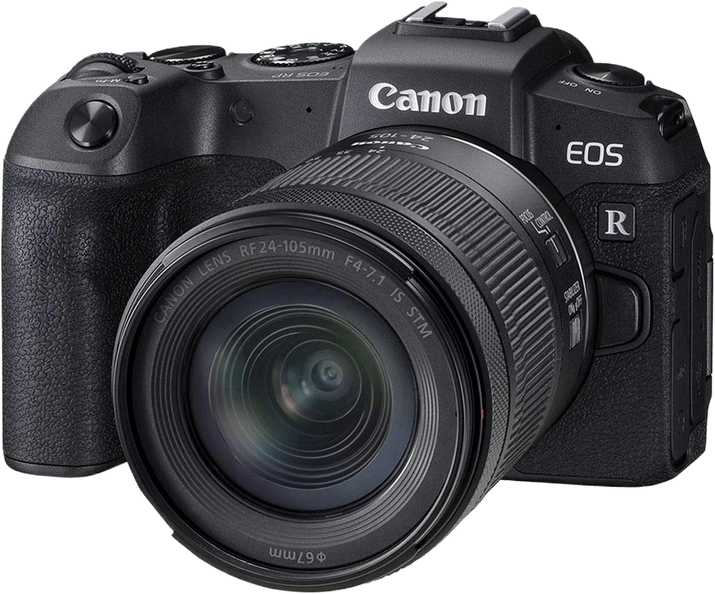
- Affordable full-frame mirrorless
- Lightweight and easy to handle
- Macro stacking and time-lapse
- Convenient Wi-Fi and Bluetooth
- Nice 4K video performance
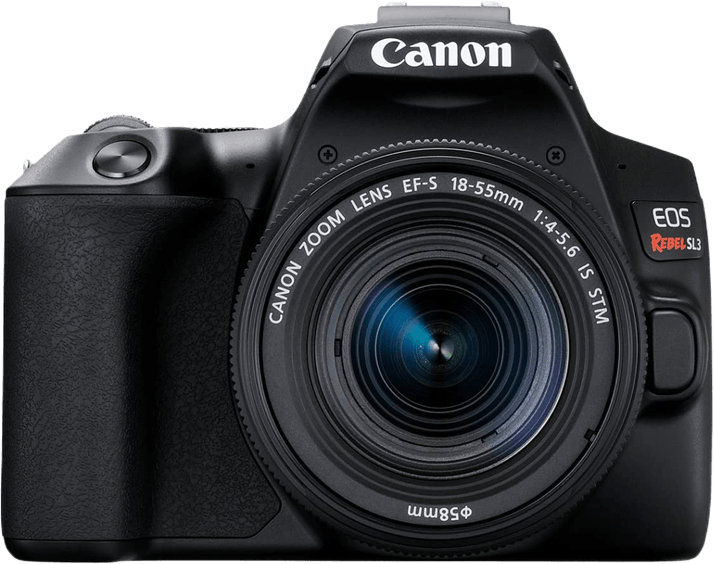
- Excellent value
- Compact body for a DSLR
- Insanely good battery life
- Fully articulating screen is helpful for capturing video
- Solid 4K video quality

- Strong sensor resolution
- 4K and Full HD video options
- Time-lapse recording
- External mic port
- Webcam functionality
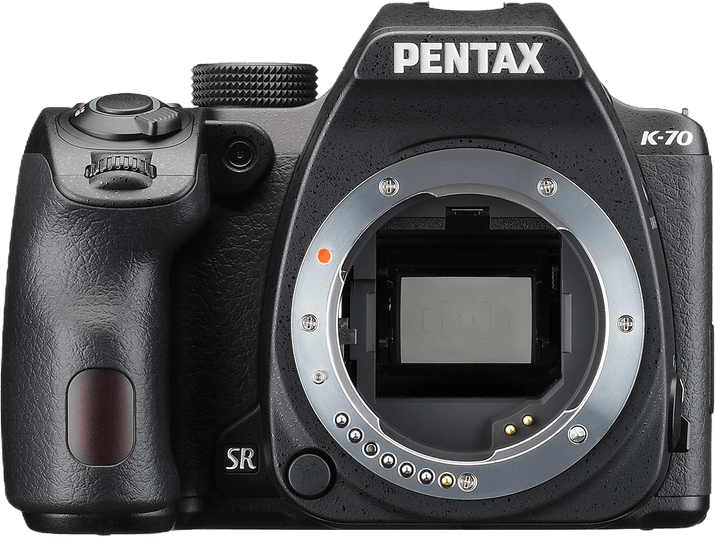
- Brilliant low-light performance with a wide ISO range
- Excellent image quality and sensor
- Built-in image stabilizer reduces camera shake
- High-quality pentaprism viewfinder
- Durable body with full weather sealing
11 Best Affordable Landscape Photography Cameras to Buy in Detail
Let’s look at the best budget alternatives currently on the market for landscape photographers.
Some cameras remove the anti-aliasing (AA) filter or let you switch it off for added sharpness. And it’s best to have a wide choice of wide-angle and ultra-wide-angle lenses. This is especially true if you choose a crop-sensor camera.
I’ve mostly chosen 24 MP APS-C and full frame models rather than compact cameras. But there’s one very good Micro Four Thirds camera that might surprise you!
1. Panasonic DC-G9
no

| Camera Type |
Camera Type
|
| Megapixels |
Megapixels
20 MP |
| Sensor Format |
Sensor Format
|
| Sensor Size |
Sensor Size
17.3 x 13 mm
|
| Frame Rate |
Frame Rate
20 fps |
| Autofocus Points |
Autofocus Points
225 |
- High Resolution mode for detailed images of static subjects
- Lots of custom button options and touchscreen functionality
- An LCD screen on the top plate
- Easy Wi-Fi and Bluetooth connectivity
- Durable, weather-sealed body
- Excellent 4K / 60p Ultra HD video
- Contrast-detection autofocus wobbles in electronic viewfinder
- Unresponsive AF joystick can't make diagonal movements
- Your nose can accidentally activate the touchpad AF
- Rolling shutter effects visible at 20 fps
The Panasonic DC-G9 is a Micro Four Thirds camera with a 20.3 MP sensor. You might imagine such a small sensor wouldn’t work for landscape photography. But it provides excellent image quality.
You can even produce 80 MP images in the eight-shot composite High Resolution mode. This is best for stationary subjects as there’s no way to compensate for subject movement.
It also features a burst rate of 20 fps, 6.5 stops of shake reduction, and an updated Depth from Defocus AF system.
The magnesium alloy body is weather-sealed. And it has a fully articulating touchscreen and a high-resolution EVF. It also has two SD UHS-II card slots and ports for microphones or headphones, flash sync, USB, and wired remote.
The video quality is good. And you can shoot Ultra HD (UHD) 4K video at anything up to 60 fps or Full HD at 180 fps. You can also capture stills while recording.
The only real problem is the lack of phase-detect autofocus. But that’s more of a problem for sports and action shooters!
The standard lens kit and premium lens kit come with a 12-60mm zoom lens (f/2.8-4 and f/3.5-5.6). Or you can pair it with another wide-angle Pansonic G Series lens.
2. Sony a6100
no

| Camera Type |
Camera Type
|
| Megapixels |
Megapixels
24 MP |
| Sensor Format |
Sensor Format
|
| Sensor Size |
Sensor Size
15.6 x 23.5 mm
|
| Frame Rate |
Frame Rate
11 fps |
| Autofocus Points |
Autofocus Points
425 |
- Great value for the price
- Eye-detect autofocus for humans and animals
- Compact size
- 4K video option
- Flip-out touchscreen for selfies and vlogging
- No in-body stabilization
- Low 1/4000 s max shutter speed
- No GPS
- Not weather-sealed
- No headphone jack
The Sony a6100 is an entry-level mirrorless camera with a 24 MP APS-C sensor. Like many Sony models, it boasts an excellent frame rate and autofocus system. Plus, it has several custom options.
You can shoot bursts at 11 fps, and the 425-point Hybrid AF system offers real-time tracking of objects, faces, and eyes. You also get a 3-inch tilting touchscreen, a mic jack, Wi-Fi, Bluetooth with NFC, a good battery life, and 4K video.
But there are a few issues. The menu system isn’t very user-friendly. There’s no front command dial. And it doesn’t have in-body image stabilization (IBIS) or in-camera RAW conversion.
You also get a lot of “jello” (rolling shutter effect) in 4K / 24p footage. And there’s a heavy crop in 4K / 30p.
There are affordable kit lens options. Or you can pair it with a Sony APS-C lens.
3. Pentax KF
no

| Camera Type |
Camera Type
|
| Megapixels |
Megapixels
24 MP |
| Sensor Format |
Sensor Format
|
| Sensor Size |
Sensor Size
23.5 x 15.6 mm
|
| Frame Rate |
Frame Rate
6 fps |
| Autofocus Points |
Autofocus Points
11 |
- Image stabilization
- Optional anti-aliasing (AA) simulator
- Selfie-friendly LCD screen
- ASTROTRACER function for tracking stars
- Dustproof and freezeproof
- Only 11 focus points
- Slow burst rate
- No touchscreen
- Average battery life
- No 4K video
The Pentax KF is a compact DSLR camera with a 24 MP APS-C sensor. It has a portable but durable body that is dust-proof and can operate at temperatures as low as 14 F (-10 C).
It also offers a new selfie-friendly LCD display with a higher resolution and an ISO range topping out at 102,400. And there are new custom image modes. Kyushu works best with fall colors and Katen with summer scenes.
The KF is an upgraded K-70. So it has the same Pixel Shift Resolution system and Shake Reduction (SR) system. And it has an ASTROTRACER and AA simulator.
But there’s a new USB to USB-C connector. And the utility software is now saved on the camera rather than a CD-ROM.
The main downside is that the Hybrid AF only works in Live View. This means you have to put up with the slower 11-point contrast detection system when using the viewfinder. There’s also no 4K video.
The KF has two affordable kits with zoom lenses. Or you can find a good Pentax APS-C wide-angle lens.
4. Canon EOS Rebel T8i
no

| Camera Type |
Camera Type
|
| Megapixels |
Megapixels
24 MP |
| Sensor Format |
Sensor Format
|
| Sensor Size |
Sensor Size
14.9 x 22.3 mm
|
| Frame Rate |
Frame Rate
7.5 fps |
| Autofocus Points |
Autofocus Points
45 |
- Excellent image quality
- Face and eye-detection AF
- Great ISO range and low-light performance
- 4K/25p and Full HD/120p video
- Webcam functionality and remote shooting with smartphone
- Fiddly control dials
- Less reliable AF in video mode
- Small optical viewfinder display
- Cropped 4K video
The Canon EOS Rebel T8i (EOS 850D or EOS Kiss X10i) is a “high-end entry-level” DSLR camera with a 24 MP APS-C sensor. You also get good ergonomics, 4K / 24p video, a fully articulating touchscreen, Wi-Fi, Bluetooth, and a mic jack.
But the AF system, while using the viewfinder, is fairly basic, with only 45 cross-type focus points. You only get Dual Pixel AF and face and eye detection for Live View and video. And the video capabilities are also limited.
But Canon has a wide selection of STM (EF or EF-S) lenses you can upgrade to.
5. Fujifilm X-S10
no

| Camera Type |
Camera Type
|
| Megapixels |
Megapixels
26 MP |
| Sensor Format |
Sensor Format
|
| Sensor Size |
Sensor Size
23.5 x 15.6 mm
|
| Frame Rate |
Frame Rate
20 fps |
| Autofocus Points |
Autofocus Points
425 |
- Stunning image quality
- Good ergonomics
- 5-axis in-body stabilization
- 30 fps with crop or 20 fps without
- 4K Ultra HD with good dynamic range
- Wi-Fi and Bluetooth connectivity
- Subject tracking is not good enough for sports or action shots
- Few custom buttons
- Small viewfinder
- Only one UHS-I memory card slot
- Poor 325-shot battery using the LCD
The Fujifilm X-S10 is a DSLR camera with the same 26 MP APS-C sensor, image processor, and AF system as in the X-T4. It offers a vari-angle touchscreen, six-stop, five-axis IBIS, and a mic jack. Plus, it has a 20 fps burst rate—or 30 fps with a crop.
Like many Fujifilm cameras, it has many Film Simulation modes, such as ETERNA Beach Bypass.
The video features are especially impressive. The X-S10 offers 4K Ultra HD (UHD) and DCI (cinema-quality) video at 30 fps. Or it has 240 fps if you drop it down to Full HD.
It also supports F-Log for better dynamic range, 8-bit 4:2:0 internal recording, and higher-quality 10-bit 4:2:2 external recording.
But the AF system’s tracking has fallen behind that of other manufacturers. And you need a USB-C dongle to fit headphones.
The camera also has a mode dial rather than the shutter speed and aperture dials on other X Series cameras. That might not be to your taste. But besides the kits lenses, you have a wide variety of Fujifilm XF lenses to pair with this camera.
6. Nikon Z50
no

| Camera Type |
Camera Type
|
| Megapixels |
Megapixels
21 MP |
| Sensor Format |
Sensor Format
|
| Sensor Size |
Sensor Size
23.5 x 15.7 mm
|
| Frame Rate |
Frame Rate
11 fps |
| Autofocus Points |
Autofocus Points
209 |
- A more affordable mirrorless option
- Nice to handle and use
- Relatively lightweight and not too bulky
- Solid 4K video performance
- 20.8 MP sensor resolution is lower than many close competitors
- Poor battery life
- Only one memory card slot
- Limited native APS-C lenses
The Nikon Z50 is a compact DX-format (or APS-C) mirrorless camera with a 20.9 MP sensor. It offers 11 fps, 4K video, Wi-Fi, Bluetooth, and a tilting touchscreen.
It also has an on-sensor phase-detect AF with face and eye detection. And you also get many special effects that you can use for both stills and videos.
But the Z50 has no in-body image stabilization (IBIS), and 4K video only comes with a 1.5x crop.
The kit comes with two Z Series DX (APS-C) mirrorless lenses, which is quite a deal. Otherwise, the lens selection is limited.
But you can buy the Nikon FTZ adapter to use AF-I, AF-P, and AF-S Nikon DSLR lenses. But autofocus only works with the newest lenses with built-in AF motors.
7. Canon EOS R10
no

| Camera Type |
Camera Type
|
| Megapixels |
Megapixels
24 MP |
| Sensor Format |
Sensor Format
|
| Sensor Size |
Sensor Size
22.2 x 14.8 mm
|
| Frame Rate |
Frame Rate
15 fps |
| Autofocus Points |
Autofocus Points
651 |
- Powerful APS-C sensor
- Professional-standard Dual-Pixel AF
- 23 fps burst speed (electronic shutter)
- Compact and lightweight camera body
- Excellent video quality with 4K options
- No image stabilization when taking photos or recording video
- Only has one slot for memory cards
- Body has no weather sealing
- 4K/60p video is cropped
The Canon EOS R10 offers a 24.2 MP APS-C camera sensor in a lightweight mirrorless body. The standout camera features are the fast autofocus system and 23 fps burst rate.
But you also get the usual Canon bells and whistles. These include a fully articulating 3-inch touchscreen, 4K video, and built-in Wi-Fi.
But the R10 has no headphone port, is not environmentally sealed, and doesn’t have GPS.
I you don’t like the kit lens, Canon has a good selection of landscape RF lenses. Unfortunately, there aren’t many affordable RF lenses. And they tend to be quite big. This defeats the purpose of having a lighter camera body!
8. Canon EOS RP
no

| Camera Type |
Camera Type
|
| Megapixels |
Megapixels
26 MP |
| Sensor Format |
Sensor Format
|
| Sensor Size |
Sensor Size
24 x 35.9 mm
|
| Frame Rate |
Frame Rate
5 fps |
| Autofocus Points |
Autofocus Points
4,779 |
- Affordable full-frame mirrorless
- Lightweight and easy to handle
- Macro stacking and time-lapse
- Convenient Wi-Fi and Bluetooth
- Nice 4K video performance
- 5 fps max burst is slow compared to competitors
- Relatively poor 250-shot battery life
- Doesn't function while charging
- 4K video is cropped 1.6x
The Canon RP is the company’s cheapest full frame camera. It has a 26 MP sensor with Dual Pixel AF covering 88% x 100% of the frame. It’s a bit like the EOS 6D Mark II, except with an electronic viewfinder and 4K video.
It also offers a lightweight build, a fully articulating touchscreen, and a converter for EF-mount lenses. But it faces the same problem as the mirrorless EOS R10, with not having cheap or light lenses.
Other disadvantages include the 4 fps burst rate and the heavy crop in 4K video. Finally, there’s only one card slot. And it only takes slower SD UHS-II memory cards.
9. Canon EOS Rebel SL3
no

| Camera Type |
Camera Type
|
| Megapixels |
Megapixels
24 MP |
| Sensor Format |
Sensor Format
|
| Sensor Size |
Sensor Size
22.3 x 14.9 mm
|
| Frame Rate |
Frame Rate
5 fps |
| Autofocus Points |
Autofocus Points
9 |
- Excellent value
- Compact body for a DSLR
- Insanely good battery life
- Fully articulating screen is helpful for capturing video
- Solid 4K video quality
- Only 9 autofocus points
- Lacks in-body image stabilization
- No USB charging
- No weather sealing
- 1.7x 4K crop factor
The Canon EOS Rebel SL3 (or (EOS 250D or EOS Kiss X10) is a very compact DSLR camera with a 24 MP APS-C camera sensor. Again, it has a comfortable grip, a fully articulating touchscreen, Wi-Fi and Bluetooth.
You get Dual Pixel AF for stills and video (except 4K). And Eye AF is available in Live View. But the autofocus system doesn’t work as well using the viewfinder. There is a guide mode, though, to help you learn the basics as you go along.
The limitations include the simplified controls, lack of customization, the 5 fps burst rate, and the heavy crop with 4K video. But these are not especially important for landscape photography.
Again, you can buy only the SL3 camera body without the kit lens and choose another STM (EF or EF-S) lens.
10. Canon EOS M50 Mark II
no

| Camera Type |
Camera Type
|
| Megapixels |
Megapixels
24 MP |
| Sensor Format |
Sensor Format
|
| Sensor Size |
Sensor Size
14.9 x 22.3 mm
|
| Frame Rate |
Frame Rate
10 fps |
| Autofocus Points |
Autofocus Points
143 |
- Strong sensor resolution
- 4K and Full HD video options
- Time-lapse recording
- External mic port
- Webcam functionality
- 4K video is cropped
- No environmental sealing
- No sensor-shift image stabilization
- Disappointing battery life
The Canon EOS M50 Mark II (or EOS Kiss M2) is a mirrorless camera with a 24 MP APS-C sensor. Like most Canon cameras, it offers good ergonomics. And it has a fully articulating touchscreen (with vertical video), Wi-Fi, and Bluetooth.
Plus, it has Canon’s patented Dual Pixel AF. This is an excellent autofocus system—although it doesn’t work with 4K.
Speaking of which, the 4K footage is disappointing (with a rolling shutter effect). And Eye Detect AF doesn’t work very well.
Also, there’s only one control dial, and the livestreaming limitations are frustrating. But these weaknesses don’t affect its performance in landscape photography much!
The M50 has decent lens kits. Or you can choose another EF-mount lens.
11. Pentax K-70
no

| Camera Type |
Camera Type
|
| Megapixels |
Megapixels
24 MP |
| Sensor Format |
Sensor Format
|
| Sensor Size |
Sensor Size
23.5 x 15.6 mm
|
| Frame Rate |
Frame Rate
6 fps |
| Autofocus Points |
Autofocus Points
11 |
- Brilliant low-light performance with a wide ISO range
- Excellent image quality and sensor
- Built-in image stabilizer reduces camera shake
- High-quality pentaprism viewfinder
- Durable body with full weather sealing
- Limited AF system for fast-moving subjects
- Slow buffering when shooting in RAW
- Slow max burst speed of 6 fps
- Poor connecting Wi-Fi app
- Only Full HD video, no 4K recording
The Pentax K-70 is a good-value DSLR with a 24 MP APS-C camera sensor. It’s the first Pentax model to have on-sensor phase-detect autofocus. You can use Pixel Shift to combine four images for better resolution and reduced color noise.
The Shake Reduction (SR) system can also simulate an anti-aliasing filter that you can turn off and on. This lets you choose between sharpness and avoiding the risk of moiré effects.
The K-70 also has exceptional weather sealing. This means you won’t need to worry about taking pictures in rainy or snowy conditions. Just make sure you buy Pentax APS-C lenses that offer the same protection!
The other advantage is the 3-inch fully articulating LCD screen. And it also has a “night vision” feature for astrophotography. If you fit the optional GPS module, you can use ASTROTRACER to track the movement of the stars.
There are downsides with the K-70, such as its weight (1.52 lbs / 688 g), low 6 fps burst rate, unreliable Wi-Fi, and lack of 4K. But that shouldn’t be much of a problem for landscape photographers!
Our Verdict
The best affordable camera for landscape photography has to cover several bases. Landscape photographers want high resolution and good low-light performance. Weather sealing, portability, and a user-friendly experience are also desired.
Plenty of high-end cameras offer that, such as the Sony a1 or a7R V. Unfortunately, they’re all much more than $1,200! But our top pick is the Panasonic DC-G9. It’s an affordable option for budding landscape photographers.

Panasonic Lumix DC-G9
Buying Guide for Affordable Landscape Cameras
If you have to make trade-offs to keep within budget, you have a few options:
A Low-Light Landscape Camera
If you like low-light photography, you might prefer full frame cameras like the Canon EOS RP. But most landscape photographers use the lowest ISO, choose a narrow aperture like f/16, and let the camera choose the shutter speed.
This means you don’t only need a large sensor or wide ISO range to help you in low light. There’s a risk of motion blur with moving subjects.
But you don’t get many of those in landscape photography! And you can always use a long shutter speed even if you’re shooting waves or clouds.

A Sharp, High-Resolution Landscape Camera
If you want sharpness or the ability to crop in, having as many megapixels (MP) as possible is important. That’s where the Panasonic G9‘s Hi-Res Capture mode comes in handy!
Another factor is the AA filter. You’ll get slightly sharper images if there isn’t one. (Or you can switch it off). And you might get moiré effects. But that’s not usually a problem when shooting landscapes.
Portable Landscape Cameras
If portability is most important to you, the answer is probably a mirrorless model. There are good options like the Panasonic G9 or the Sony a6100.
Both camera bodies and lenses are smaller and lighter. It’s a big deal if you’re always hiking up and down mountains to find suitable landscapes!
Best Affordable Camera for Landscape Photography FAQs
Here are the most common questions about the best affordable camera for landscape photography. We hope this helps you make the most informed decision when you buy one.
What’s a Good Quality Camera for Landscape Shots?
Strangely enough, the best camera is likely the Panasonic G9, even though it’s only a Micro Four Thirds! That’s because the image quality is still good, and you can even use the 80 MP Hi-Res Capture mode for extra detail and higher dynamic range.
Other mirrorless models with larger sensors include the Sony a6100, Fujifilm X-S10, and Nikon Z50. If you prefer a DSLR, you could buy the Pentax KF or the Canon EOS Rebel T8i.

How Many Megapixels Do I Need for Landscape Photography?
The more, the merrier! As a landscape photographer, you’ll probably want your images to be as sharp as possible from front to back. More megapixels (MP) help you achieve that. (All other things being equal.)
There are plenty of other factors, and higher-resolution cameras normally cost more. But when it comes to sensors, a good big one will always beat a good little one!
Which Camera is Best for Photography at a Low Price?
There’s always a trade-off between features and the cost of a camera. If you’re looking for the best cameras for landscape photography, you have a couple of options. You can buy a new camera for as much as you can afford. Or you can buy a second-hand or “renewed” model for the same price.
You’ll usually get better specs on paper with the latter. But the risk is that there might be a fault with the camera.
Are EOS or Mirrorless Better for Capturing Landscapes?
EOS cameras are simply Canon DSLRs. So the question is, “Are DSLRs or mirrorless models better cameras for landscape photography?” The answer depends on what you’re looking for.
DSLR cameras usually have an optical viewfinder and better weather sealing. But mirrorless models have WYSIWYG EVFs and LCD screens. Plus, they have AF systems covering the whole frame. Mirrorless is also a good way to future-proof your purchase.
If you’re still not sure which landscape camera to choose, try our guides to the best cameras for outdoor photography or night photography next!


